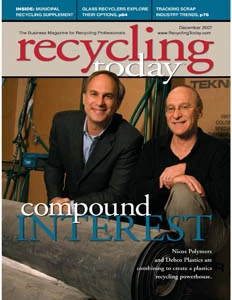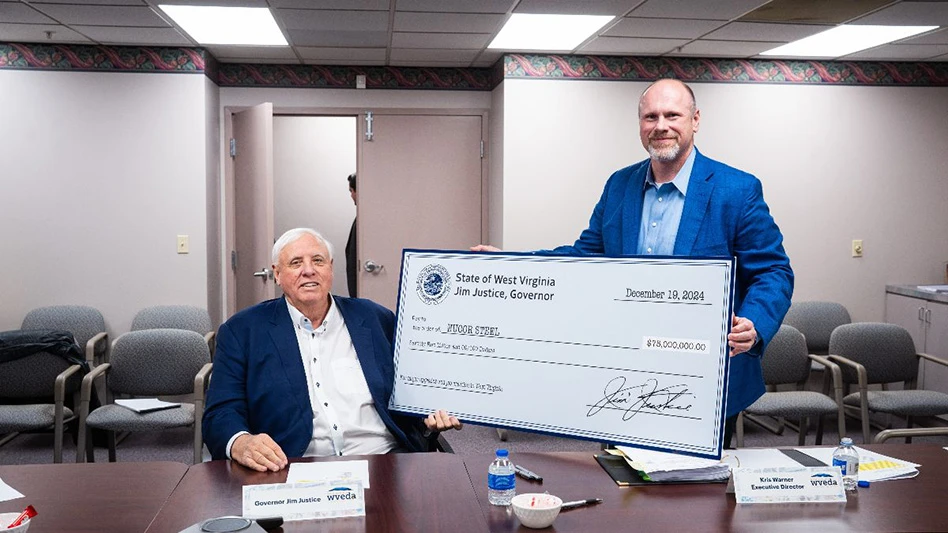How do you find decision makers within an organization? In this article, you’ll learn not only how to find them, but you’ll also be able to qualify four types of buying influencers and to work with their decision-making roles.
In smaller sales, there are generally only one or two decision makers. Complex sales however, generally involve multiple people to provide input or approval before a final decision is made. These decision makers are often hidden, creating two types of road blocks for advancing the sale: first, identifying all of the various decision-makers accurately and, second, determining which role each plays in advancing the sale.
FOUR BUYING ROLESIn every sale, there are four vital buying roles. Anywhere from one to several dozen people may play a part in making a decision. But, no matter how many people are involved, they still play one of four roles. It’s the job of the sales professional to find and qualify all the decision makers in these four roles:
1. Financial Buyer—The Financial Buyer has the final authority to buy. There’s always at least one person who plays this role, but it may also be a group or committee. People in this role have the economic power to release money. They can say, "Yes," when everyone else has said, "No," or they can say, "No," when everyone else has agreed to move forward. 2. Performance Buyer—The role of the Performance Buyer is to assess the effect of your product or service on outcomes such as job performance, usability, efficiency or effectiveness. Performance Buyers are typically those who will use or supervise your product or service and who will make decisions based on how well your offering increases their personal day-to-day success. In most complex sales, several Performance Buyers are involved in judging performance. 3. Specification Buyer—The role of the Specification Buyer is to screen out potential vendors. His or her focus is on how well your product or service conforms to compliance issues, specifications or any other inhibitors, such as technical compatibility. Specification Buyers don’t have the power to give a final, "Yes," but they can be the final, "No," if standards or specs aren’t a match. Several Specification Buyers are usually involved in assessing the technical aspects of a specific sales goal. 4. Guide—The unique role of a Guide is to lead you to other buying roles, particularly hidden influencers, and to provide vital information to successfully position you with each of these influencers. Guides are also unique in that they may be found within your target organization, in your own organization or through networking outside of both organizations. Guides help you to win, thereby creating a personal win for themselves. For each sales objective, find and develop at least one Guide. BUYING INFLUENCERSBuying influencers are people who play one of the four buying roles, as they each have varying levels of influence on the outcome of the sale. For example, the role of the Financial Buyer is called the Financial Influencer, while Specification Buyers are Specification Influencers, and Performance Buyers are Performance Influencers. Guides are uniquely, Guides, however.
Buying Influencers are not only traditional buyers within an organization, such as purchasing agents, but also those who have a voice in buying decisions.
Organizations involved in larger, complex selling situations often share responsibilities for making decisions among several influencers to reduce the risk of making a poor decision and to spread risk among constituents, who then share the glory or blame.
THE SECRET TO SUCCESSThe foundation for a sound sales strategy involves knowing who you should be talking to. This is an obvious statement, but an often overlooked step when qualifying within a complex sale. You may have found the Financial Influencer, but there are three other influencers who could affect your success.
Don’t assume that you know whose approvals are necessary each time. There are too many shifts in buying responsibilities to be certain with each sale. Too many sales people wind up talking to those with whom they’re comfortable, those who’ve approved orders in the past or those who have the right titles next to their names. Even when led to the right influencers, it doesn’t help you understand why they were selected for becoming involved in this particular sale.
Assume that every sale is unique. To develop a systematic way to qualify and locate each buying influencer for each sales objective, focus on the four buying roles, not on your contacts, within each sale. All four roles could be played by one person or by any combination of people in each role.
One way or another, there are always four roles played out in arriving at the final decision. Understanding the roles of the buyers involved in a transaction will help you to identify the people playing these roles in an organization.
FINDING FINANCIAL BUYERSThe Financial Buying Influencer is the person who gives the final approval to buy. The role of this influencer is to release the economic power for a purchase. Financial Buying Influencers are, by nature, in the upper stratosphere within an organization. In smaller organizations, the owner, CEO or president may play the role.
Financial roles can shift from sale to sale and will depend on five critical decision variables—the final cost to participate in your offering, experience with you and your organization, experience with your product or service, business conditions and the potential effect of your offerings on the bottom line.
FINDING PERFORMANCE BUYERSPerformance Buyers evaluate the effect of your product or service on a specific job to be done. You may already know what segment of an organization your product or service will affect, but you need to ask who will be involved in evaluating performance.
In most complex sales, there will usually be several Performance Buyers, but ultimately one who has more clout than the others. It might include a manager of a department with several subordinates, an information manager and a technical administrator as a unit of Performance Buyers.
If you haven’t convinced the key Performance Buyer, it will be very difficult to confirm the sale. His or her input carries significant weight with Financial Buyers. They know that if the people using the product or service aren’t sold, it’s an invitation to disaster. Expect non-believers to be resentful or even sabotage your product’s success.
Performance Buyers ask questions related to reliability, ease of use, training, safety, track record, maintenance, downtime and impact on attitudes or morale. They’re looking for solutions to make their jobs easier while being more productive.
FINDING SPECIFICATION BUYERSWhile Performance Buyers can be difficult, Specification Buyers are difficult. It’s their job. Specification Buyers are more difficult to locate than other Influencers not only because of their screening role, but because they often "run interference" for the Financial Buyer. In some cases, Specification Buyers claim to be the Financial Buyer with final approval. Some assume this power deliberately to protect the Financial Buyer, but others are confused about their power, which is mostly brought on by the Financial Buyer.
Let’s say a Financial Buyer named Hank says to his Spec Buyer Mary Lou, "I’ll go with your recommendation, Mary Lou, but run it by me first."
This can easily lead to a well-intended Specification Buyer who has misunderstood her role.
To clear the air, ask, "Are there others involved in the decision that we need to consult with before moving forward?" If the Financial Buyer is mentioned, ask for the three of you to get together so that you’re all working with the same information.
If you’re blocked, then ask, "Does Hank usually go along with your recommendation?" Get a, "Yes," commitment. It’s human nature for Mary Lou to want to honor her word with you. She will go to bat for you in ways you hadn’t imagined.
The reason you’ll get a thumbs-up or thumbs-down from a Spec Buyer is because of the product or service itself. Spec Buyers ask, "How well have you passed our screen test criteria?" The more you know your product and understand all the screening variables it might have to pass, the greater the likelihood for getting a Spec Buyer’s strong recommendation.
To avoid further confusion, cultivate a relationship with a Guide.
FINDING GUIDESEvery complex sale needs a Guide, someone who can help you navigate your way through the myriad of decision makers. Finding Guides is different than locating other Buying Influencers. Other Influencers already exist, if not formally named, at least in potential. They need to be identified by asking questions of the Influencers and your Guide. But your Guide doesn’t exist until you’ve not only found one, but also created and developed the role. Guides can be found in your prospect organization, within your own or outside of both.
In locating a good Guide, use three criteria for judging effectiveness:
1. Do you have credibility with this person? Perhaps the Guide has seen you in action in the past or is a satisfied customer. Your database of customer advocates is a good place to start to find Guides.
2. Does the Guide have sufficient credibility within your prospect’s organization? Someone without credibility won’t be a strong liaison to Buying Influencers, and the quality of the information passed on may be unreliable. Because there’s often considerable cross-over in buying roles, you may find an excellent Guide who’s also a Performance Buyer. Ideally the Financial Influencer would become your Guide as well.
3. Does the Guide want you to succeed? He or she could be a mentor within your organization, a friend or anyone who believes that your win in this sale enhances his or her personal self-interest. A Guide could be a manager in your organization who’s had experience with this account in the past, knows Buying Influencers and can open doors.
CONVERTING GUIDESGood guides have to be created. You might not find a perfect fit with these three criteria, but you may find someone who has the potential to be developed. Very often it’s an administrative assistant, a supervisor, someone in HR or anyone who can give you access to other influencers. Test your candidates by asking for them to guide or coach you in making the appropriate contacts. More often than not, these people have been hired to help facilitate contacts.
Don’t ask your Guide to do your selling for you or ask for a referral, but rather ask for guidance in who to talk to. By asking for guidance or coaching, referrals come naturally.
The bottom line in sales success is to focus on finding all those who play a role as one of four buying influencers and addressing their decision-making criteria. It will take your sales performance from good to great. n
Named "Consummate Speaker of the Year," Lorna Riley, CSP, is an elite productivity presenter, a winner of five productivity and speaker awards and the author of nine books, three audio programs, 30 sales programs and 60 productivity programs. She personally increased sales by 600 percent. Riley can be contacted at lorna@chartlearningsolutions.com.

Explore the December 2007 Issue
Check out more from this issue and find your next story to read.
Latest from Recycling Today
- IDTechEx sees electric-powered construction equipment growth
- Global steel output recedes in November
- Fitch Ratings sees reasons for steel optimism in 2025
- P+PB adds new board members
- BlueScope, BHP & Rio Tinto select site for electric smelting furnace pilot plant
- Magnomer joins Canada Plastics Pact
- Out of touch with reality
- Electra names new CFO





